War Admiral’s owner, Sam Riddle, initially disliked the foal for being too small—certainly not like his majestic father, Man o’ War. The colt, however, proved to be the best of Man o’ War’s offspring on the track.
He went undefeated through the 1937 season, taking several high-profile races and sweeping the Triple Crown, becoming only the fourth horse to do so. At the start of the Belmont Stakes, the small colt stumbled so badly that he sheared a square inch chunk of his front hoof off. He continued the race, bleeding heavily the entire way, to win the race easily in track record time.

War Admiral, bleeding freely from one of his front feet after breaking awkwardly, leaves the field behind to claim the 1937 Belmont Stakes and Triple Crown.
His racing record sealed in stone, he was retired in 1938 to an equally impressive stud career. Standing in the stall of honor next to Man o’ War, he sired a list of champions, including 1945 Horse of the Year Busher, multiple stakes winner Searching, champion juvenile Blue Peter, excellent race mare and producer Busanda, and wonderful filly War Date.
War Admiral
(1934-1959)Brown colt by Man o’ War, out of Brushup
Nickname: “The Mighty Atom”
Record: 26 starts, 21 wins, 3 places, 1 show
Earnings: $273,240
1937 Triple Crown Winner
1937 Horse of the Year
The old champion died in 1959, the year after he was inducted into the Racing Hall of Fame. He was initially buried at the foot of his sire’s grave at Faraway Farm, but his remains were later moved to the Kentucky Horse Park.
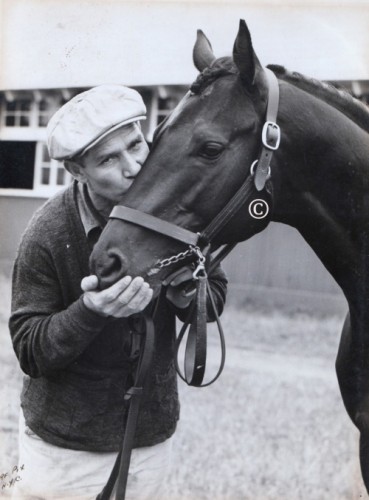
War Admiral gets some love from his groom.
“At first glance the small dark War Admiral did not seem to resemble his big red sire at all. Only the smouldering eye that flamed in the face of competition and the high, proud head showed any relationship. Yet of all Man o’ War’s fine offspring this one, least like him in appearance, was most like him in performance. Nearly all the others would wait behind the pace and make their bid in the stretch. Only this small dark colt had speed both early and late, and liked to use it to the utmost. Both War Admiral and his sire were impatient at the restraint of the barrier and wanted to go to the front at once, pouring speed on speed until the opposition wilted.”
– Illustrator and racing historian C.W. Anderson
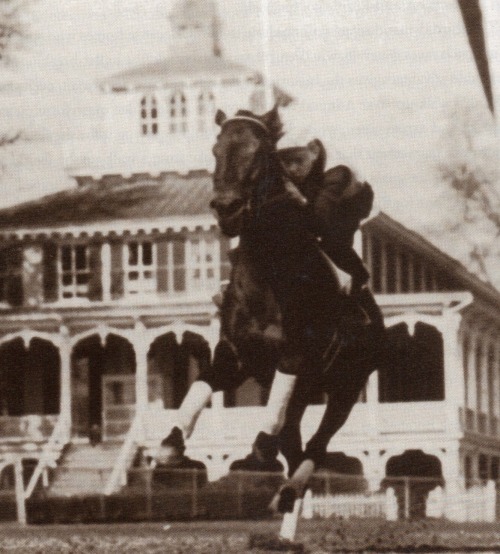
“He nearly jumped out from under me when I let him go. He is as fine a colt as I ever rode.”
-Jockey Charley Kurtsinger on War Admiral

“Even at a standstill, he was a glittering thing. He was the picture of exquisite, streamlined elegance, light and fine and quick”
-Laura Hillenbrand, “Seabiscuit: An American Legend”
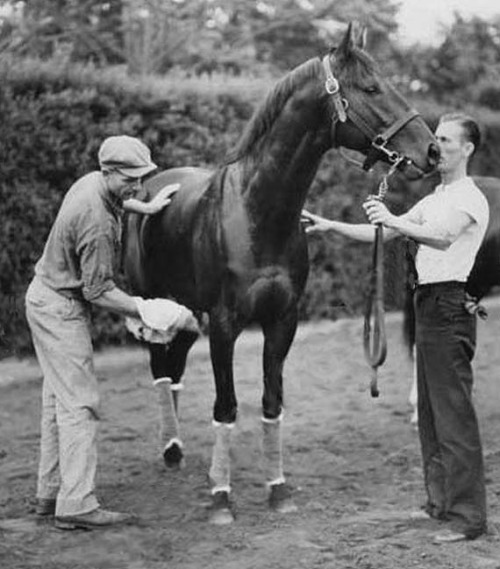
An alert-looking War Admiral gets wiped off on the track after a morning workout.
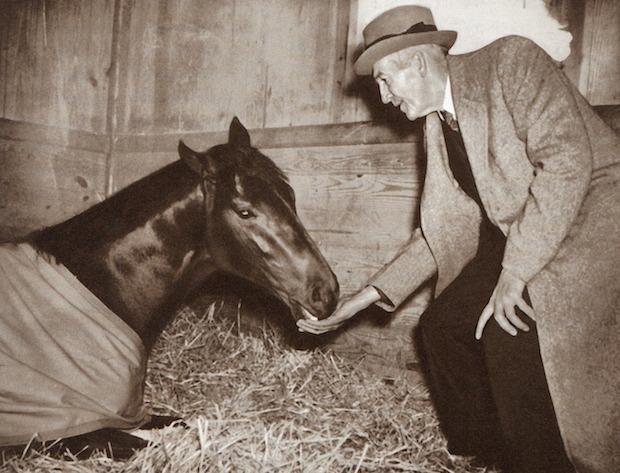
Trainer George Conway visiting his champion War Admiral on the night before the Admiral’s legendary match race with Seabiscuit, Oct. 31, 1938.
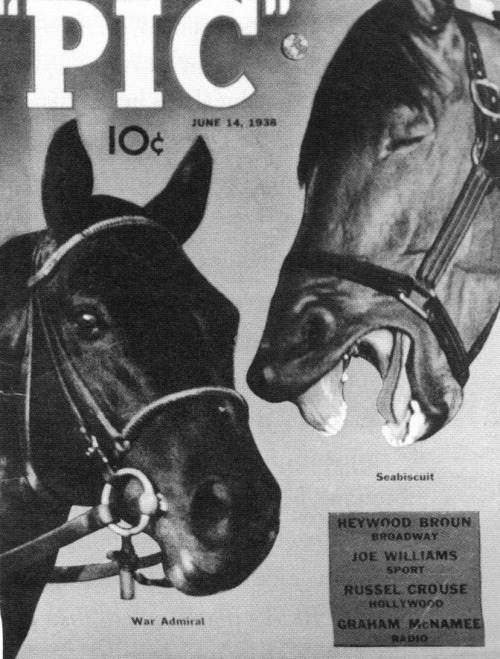
The match-race between Seabiscuit and War Admiral was the country’s biggest sporting event in 1938. Seabiscuit got the better of his foe that day at Pimlico, but many still regard the Admiral as the superior racehorse.
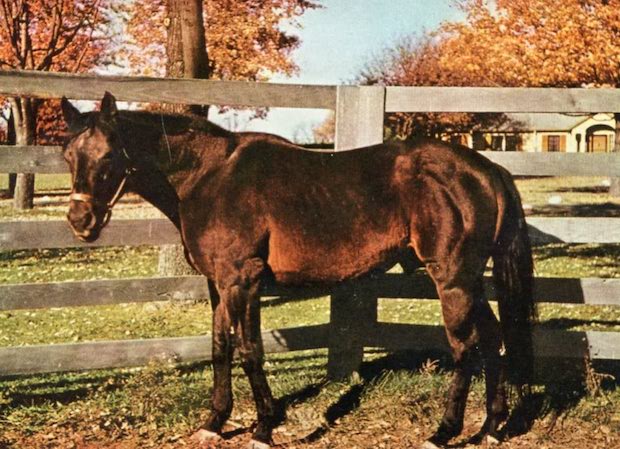
One of the only known color photos of War Admiral, taken sometime around 1958. He proved to be one of the most influential stallions of his era.
Read more at the Horse Racing History facebook page.




 December 18, 2014
December 18, 2014 





















